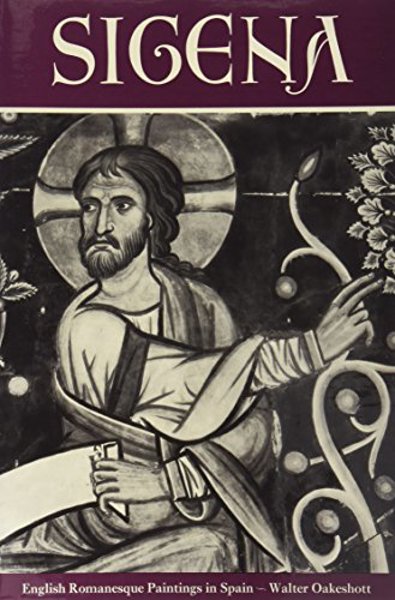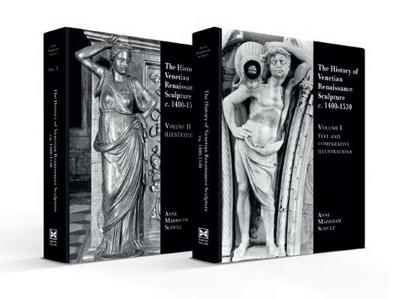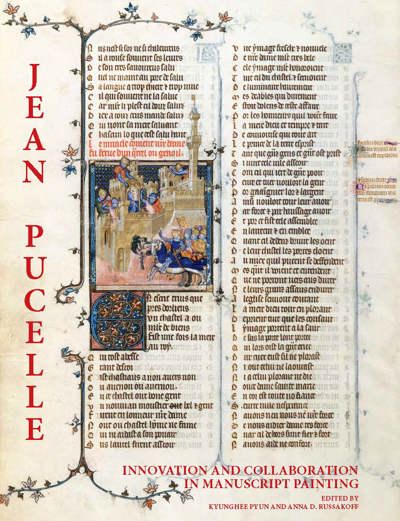
Pleasure and Politics at the Court of France
The Artistic Patronage of Queen Marie of Brabant (1260–1321)
Tracy Chapman Hamilton
- Pages: 328 p.
- Size:220 x 280 mm
- Illustrations:37 b/w, 140 col.
- Language(s):English
- Publication Year:2019
- € 140,00 EXCL. VAT RETAIL PRICE
- ISBN: 978-1-905375-68-4
- Hardback
- Available
Awarded with the 2020 Annual Book Prize of the International Center of Medieval Art (ICMA)
“This lavishly produced book explores the artistic and literary patronage of Marie of Brabant (…) Bringing together scattered material and research, this sprawling study gives Marie her full due.” (Lindy Grant, in The Burlington Magazine, 162, May 2020, p. 456)
« Ce très beau livre de Tracy Chapman Hamilton, à la belle et complète iconographie illustre parfaitement le rôle central tenu par une reine dont le patronage a inauguré celui d’une longue suite de souveraines qui ont donné une impulsion majeure aux différents arts de la fin du XIIIe et le début du XIVe siècle.» (Élisabeth Lalou, dans Francia Recensio, 2, 2020)
“Scholars and specialists of medieval art history, history, literature and culture, feminist studies and history of the book will discover many other treasures in this admirably researched volume.” (Cynthia J. Brown, in H-France Review, 20/110, 2020, p. 4)
“Overall, Tracy Chapman Hamilton succeeds admirably in putting our Knowledge of Marie of Brabant’s patronage on an entirely new footing (…) it offers an illuminating new look into queenship at the end of the Capetian thirteenth century that can be placed next to Lindy Grant’s excellent recent biography (2016) of Blanche of Castile (r. 1223-1226; d. 1252) for the first half of the century.” (Sean L. Field, in Royal Studies Journal, VII, 2020, p. 144)
“(…) Tracy Chapman Hamilton presents an intellectually rich recuperation of an understudied Gothic patron, refined aesthete, and politically savvy survivor in thirteenth- and fourteenth-century Paris. In this exquisite, impeccably researched and abundantly illustrated cultural history, the author examines ways in which a medieval queen asserted political influence through systematic patronage (…) the book doubles as a historiographic journey of both medieval and modern struggle and renewal, supplying an exemplary model of herstory for others to follow.” (Winner of the 2020 International Center of Medieval Art Annual Book Prize)
“(…) this is a fine study that not only sheds light on the atmosphere of material culture propagated by this queen’s taste and designs, but also provides us with greater insight into how queens consort might have exercised agency in shaping their image and representation. While its audience may gain more from this book those who are knowledgeable in the area of symbolism in art and sculpture, more general readers will also find much to interest them in understanding what art and culture had to say about the lives of its patrons and their needs and desires.” (Michele Seah, in Ceræ: An Australasian Journal of Medieval and Early Modern Studies, 7, 2020, p. 94-95)
“Beautifully produced, thoroughly researched, and clearly written, Tracy Chapman Hamilton’s monograph on Marie of Brabant is a welcome contribution to studies of female patrons (…) Hamilton’s book is a perfect length and it is a testament to her work that it inspires further reflections. This book will certainly be the starting point for all future studies of Marie of Brabant. With its wide-ranging sources and consideration of diverse media, it offers a model for anyone who wishes to undertake an in-depth study of a female patron.” (Anna Russakoff, in Studies in Iconography, 42, 2021, p. 206-208)
"Vanuit kunsthistorisch en genderhistorisch oogpunt is dit boek een aanrader. (...) Het biedt een mooie inkijk in het Franse hof rond 1300 en de vorstelijke c.q. adellijke rol in de productie van handschrifen en andere (kunst)voorwerpen. Het is mooi dat in het boek het bredere belang van de hertogelijke familie van Brabant in West-Europa wordt verduidelijkt." (Mark Vermeer in Noordbrabants Historisch Jaarboek, 2020, p. 222)
“Tracy Chapman Hamilton has given us a sumptuous volume that through elegant design and splendid color illustrations conjures up the glory of late-thirteenth-century Parisian court art.” (Kathleen Nolan, in Speculum, 96/3, 2021, p. 829)
“Insgesamt besticht das Buch durch seine sorgfältige und aufwändige Gestaltung gleichermaßen wie durch die hohe wissenschaftliche Qualität, dicht und gut lesbar geschrieben. Der fundierte und ausführliche Fußnotenapparat bietet neben der intensiven Diskussion der Literatur zum Thema auch die Betrachtung der handschriftlichen Überlieferung, vor allem von Rechnungen, Inventaren und Manuskripten, während die Materialität und Visualität der Quellen über die hochwertigen Illustrationen gleichermaßen Berücksichtigung finden. Insgesamt ein inspirierendes Buch, mit dem die Autorin zweifellos Maßstäbe für die Erforschung weiblicher Patronage setzt.” (Christina Antenhofer, in Archivs für Kulturgeschichte, 103/1, 2021, p. 242)
“Overall, this is a beautifully presented book that contains fine attention to detail as well as many wonderful and vivid photos, and illustrations that help bring to life the descriptions and analysis, which would otherwise require much more effort in visualising.” (Michele Seah, in Ceræ: An Australasian Journal of Medieval and Early Modern Studies, 7, 2022, p. 94)
"In der Verknüpfung der kulturellen Aktivität mit Marias Umfeld, Lebensstil und ihrer sozialen Prägung nähert Hamilton sich der individuellen Persönlichkeit an und versucht sie in ihrer Gesamtheit zu fassen. Die gute Quellenlage erleichtert diese Vorgangsweise. (...) Insgesamt entsteht ein rundes Bild einer tiefgründigen, aktiv handelnden und planenden gleichwie politischen und kunstorientierten Persönlichkeit, die durch ihre elitäre Position eine nachhaltige Wirkungskraft entfalten konnte." (Julia Hörmann-Thurn und Taxis, in Mitteilungen des Instituts für Österreichische Geschichtsforschung, 132(2), 2024, pp. 440-442)
Tracy Chapman Hamilton is Visiting Associate Professor at Virginia Commonwealth University. Her research focuses on late medieval and early modern visual culture in Europe and the Mediterranean, especially in how women made themselves visible through patronage and collecting. She is currently working on a series of articles, her second book, The Ceremonial Landscape: Art, Gender, and Geography in Fourteenth-Century Europe and the Mediterranean, and a digital project, Mapping the Medieval Woman, with Mariah Proctor-Tiffany. Hamilton has held fellowships from the National Endowment for the Humanities, the Kress and DuPont Foundations, the International Center of Medieval Art, and in 2017 was the first Mellon Fellow in the Digital Humanities at The Villa I Tatti, Harvard University’s Center for Italian Renaissance Studies.
For her commissioning and performance of a French vernacular version of the Arabic tale of the Thousand and One Nights — recorded in one of the most vivid and sumptuous extant late thirteenth-century manuscripts — as well as for her numerous other commissions, Queen Marie of Brabant (1260–1321) was heralded as an intellectual and literary patron comparable to Alexander the Great and Charlemagne. Nevertheless, classic studies of the late medieval period understate Marie’s connection to the contemporary rise of secular interests at the French court.
Pleasure and Politics seeks to reshape that conversation by illustrating how the historical and material record reveals the queen’s essential contributions to the burgeoning court. This emerging importance of the secular and redefinition of the sacred during the last decades of Capetian rule becomes all the more striking when juxtaposed to the pious tone of the lengthy reign of Louis IX (1214–1270), which had ended just four years before Marie’s marriage to his son. That Marie often chose innovative materials and iconographies for these objects — ones that would later in the fourteenth century become the norm — signals her impact on late medieval patronage.
Pleasure and Politics examines Marie’s life beginning with her youth in Brabant, to her entry into Paris in 1274 accompanied by her retinue of courtiers, artists, objects, and ideas from the northern courts of Brabant, Flanders, and Artois. It continues with her elaborate coronation held for the first time in the Sainte-Chapelle the following year, her years as queen of France — often full of intrigue — and her long, productive widowhood, until her death and burial in 1321. With a focus on her Brabantine and Carolingian heritage joined to her status as French queen — often expressed through pioneering styles of heraldry — her commissions included ceremonies, marriage treaties, and intercessions, as well as a stunning collection of jewels, seals, manuscripts, reliquaries, sculpture, stained glass, and architecture that she gathered and built around her. This study also reveals Marie’s regular collaboration with family, friends, and artists, in particular that with the poet Adenet le Roi, women of the French court like Blanche of France (1252–1320), and relatives from the north like Robert of Artois (1250–1302). With this broader view, it also analyzes the dynamics of Marie’s patronage and its impact on contemporary and future women and men of the royal house.
Court, culture, politics, and gender — these are the themes that flow throughout Marie of Brabant’s life and tie together the material effects of a long, pleasure-filled existence enlivened by the politics of Europe on the cusp of a new age.
Preface
Chapter One. Introduction
Chapter Two. Absorbing Brabantine Culture: Politics and Poetry in the Youth of Marie of Brabant
Chapter Three. Transforming the Court: New Roles in Politics, Arts, and Ceremony
Chapter Four. Deluxe, Didactic, Secular, and Spiritual: Manuscript Patronage in the Court of Marie of Brabant
Chapter Five. Carolingian Current: Promotion and Patrimony in the Patronage of Marie of Brabant
Chapter Six. Conclusion: The Next Generation: Royal Women’s Patronage into the Fourteenth Century
Appendices
Bibliography
Index





